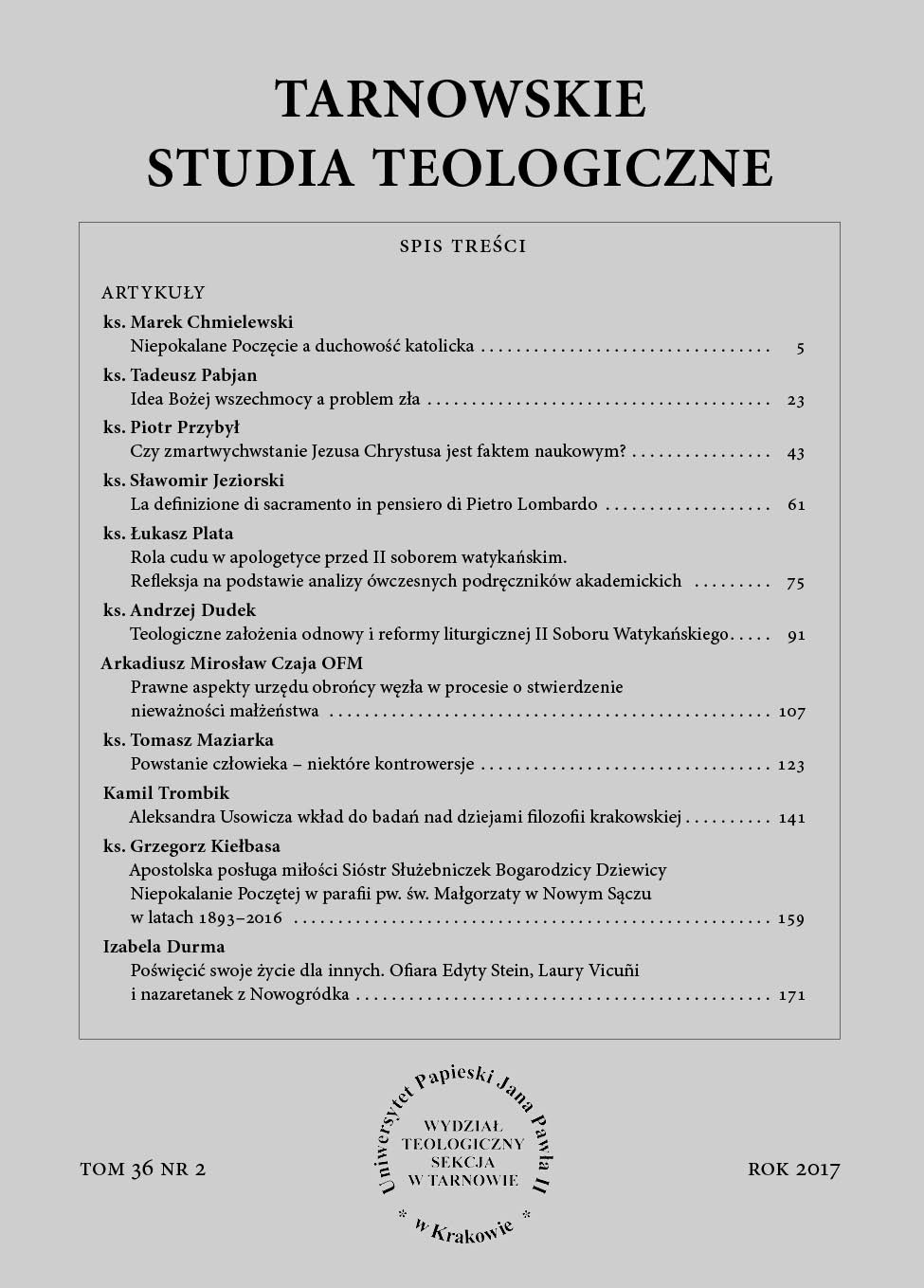Some of the Controversy Surrounding the Creation of Man
DOI:
https://doi.org/10.15633/tst.2619Keywords:
the evolution of man, Homo habilis, Homo erectus, Homo neanderthalensis, Homo sapiens, Multiregional Model, African ReplacementAbstract
This article presents some of the controversy about the creation of man. The first part addresses the issue of determining the first representative of the human race. The latter part is devoted to the evolution of Homo Erectus leading to the emergence of Homo Sapiens. Two theories, most extreme in terms of their assumptions, are presented: “Multi-regional hypothesis” and “African Replacement.” Different definitions of species used by naturalists, and their role in the creation of taxonomy and interpretation of bone material, are discussed. The last part is devoted to the controversy surrounding the Neanderthal and its role in the formation of the modern man.
References
Ayala F. J., Dar Karola Darwina dla nauki i religii, Warszawa 2009.
Balerstet J., Sabath K., Podstawy ewolucjonizmu, Gdynia 2004.
Cann R. L., Wilson A. C., Afrykański rodowód ludzkości, „Świat Nauki” 6 (1992), s. 24–30.
Cann R. L., Stoneking M., Wilson A. C., Mitochondrial DNA and Human Evolution, „Nature” 325 (1987), s. 31–36.
Day M. H., Stringer C. B., A Reconsideration of the Omo Kibish Romains and the Erectus-Sapiens Transition, w: L’Homo erectus et la place de l’homme de Tautavel parmi les Hominidés fossiles, éd. H. de Lumley, Paris 1983, s. 814–846.
Dobzhansky T., Dziedziczność a natura człowieka, tłum. M. Jurecki, Warszawa 1968.
Kaszycka K., Dwa miliony lat ewolucji człowieka, w: Kontrowersje wokół początków człowieka, red. G. Bugajak, J. Tomczyk, Katowice 2007, s. 87–97.
Kaszycka K., O pochodzeniu człowieka, w: Ewolucja życia i ewolucja wszechświata, red. J. Mączka, P. Polak, Kraków 2011, s. 135–145.
Kimbel W. H., Species, Species Concepts and Hominid Evolution, „Journal of Human Evolution” 20 (1991), s. 355–371.
Leakey R., Pochodzenie człowieka, tłum. Z. Skrok, Warszawa 1995.
Lieberman D., McBratney B., Krovitz G., The Evolution and Development of Cranial form in Homo Sapiens, „Proceedings of the National Academy of Sciences” 99 (2002), s. 1134–1139.
Lieberman P., Human Language and Human Uniqueness, „Language and Communication” 14 (1994), s. 87–95.
Mayr E., The Biological Species Concept, w: Species Concepts and Phylogeneics Theory, ed. Q. D. Wheeler, R. Maier, New York 2000, s. 17–29.
Nowaczewska W., Wybrane modele ewolucji „Homo sapiens” a zagadnienie definicji gatunku i morfologicznej identyfikacji jego reprezentantów, w: Kontrowersje wokół początków człowieka, red. G. Bugajak, J. Tomczyk, Katowice 2007, s. 112–127.
Shreeve J., Zagadka neandertalczyka. W poszukiwaniu rodowodu współczesnego człowieka, tłum. K. Sabath, Warszawa 1998.
Simpson G. G., The Meaning of Taxonomic Statements, w: Classification and Human Evolution, ed. S. L. Washburn, Chicago 1963.
Stringer C., McKie R., Afican Exodus: The Origins of Modern Humanity, London 1996.
Tattersall I., Paleoanthropology: The Last Half-Century, „Evolutionary Anthropology” 9 (2000), s. 2–16.
Tomczyk J., Początki „Homo sapiens” a problem definicji gatunku, w: Kontrowersje wokół początków człowieka, red. G. Bugajak, J. Tomczyk, Katowice 2007, s. 98–111.
Trinkaus E., Shipman P., The Neandertals: Changing the Image of Mankind, New York 1993.
Wiley E. O., Mayden R. L., The Evolutionary Species Concept, w: Species Concepts and Phylogenetics Theory, ed. Q. D. Wheeler, R. Maier, New York 2000, s. 70–89.
Wolpoff H., Multiregional Evolution: The Fossil Alternative to Eden, w: The Human Revolution, ed. P. Mellars, C. Stringer, Cambride 2007, s. 62–108.
Wolpoff M. H., Thorne A. G., et al., The Case for Sinking Homo Erectus. 100 Years of Pithecanthropus is Enough!, w: 100 Years of Pithecanthropus. The Homo Erectus Problem, ed. J. L. Franzen, Senckenberg 1994, s. 341–361.
Wood B., Collard M., The Human Genus, „Science” 284 (1999), s. 65–71.
Downloads
Published
Issue
Section
License
Authors who publish with this journal agree to the following terms:
- Authors retain the copyright and full publishing rights without restrictions, and grant the journal right of first publication with the work simultaneously licensed under a Creative Commons Attribution 4.0 International License that allows others to share the work with an acknowledgement of the work's authorship and initial publication in this journal.
- Authors are able to enter into separate, additional contractual arrangements for the non-exclusive distribution of the journal's published version of the work (e.g., post it to an institutional repository or publish it in a book), with an acknowledgement of its initial publication in this journal.
- Authors are permitted and encouraged to post their work online (e.g., in institutional repositories or on their website) prior to and during the submission process, as it can lead to productive exchanges, as well as earlier and greater citation of published work (See The Effect of Open Access).

